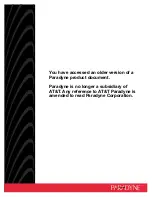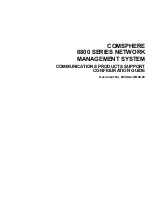
3Com Switch 8800 Configuration Guide
Chapter 19 OSPF Configuration
19-1
Chapter 19 OSPF Configuration
19.1 OSPF Overview
19.1.1 Introduction to OSPF
Open Shortest Path First (OSPF) is an Interior Gateway Protocol based on the link
state developed by IETF. At present, OSPF version 2 (RFC2328) is used, which is
available with the following features:
z
Applicable scope: It can support networks in various sizes and can support several
hundreds of routers at maximum.
z
Fast convergence: It can transmit the update packets instantly after the network
topology changes so that the change is synchronized in the AS.
z
Loop-free: Since the OSPF calculates routes with the shortest path tree algorithm
according to the collected link states, it is guaranteed that no loop routes will be
generated from the algorithm itself.
z
Area partition: It allows the network of AS to be divided into different areas for the
convenience of management so that the routing information transmitted between
the areas is abstracted further, hence to reduce the network bandwidth
consumption.
z
Equal-cost multi-route: Support multiple equal-cost routes to a destination.
z
Routing hierarchy: OSPF has a four-level routing hierarchy. It prioritizes the routes
to be intra-area, inter-area, external type-1, and external type-2 routes.
z
Authentication: It supports the interface-based packet authentication so as to
guarantee the security of the route calculation.
z
Multicast transmission: Support multicast address to receive and send packets.
19.1.2 Process of OSPF Route Calculation
The routing calculation process of the OSPF protocol is as follows:
z
Each OSPF-capable router maintains a Link State Database (LSDB), which
describes the topology of the whole AS. According to the network topology around
itself, each router generates a Link State Advertisement (LSA). The routers on the
network transmit the LSAs among them by transmitting the protocol packets to
each others. Thus, each router receives the LSAs of other routers and all these
LSAs compose its LSDB.
z
LSA describes the network topology around a router, so the LSDB describes the
network topology of the whole network. Routers can easily transform the LSDB to
a weighted directed graph, which actually reflects the topology architecture of the
whole network. Obviously, all the routers get a graph exactly the same.
















































